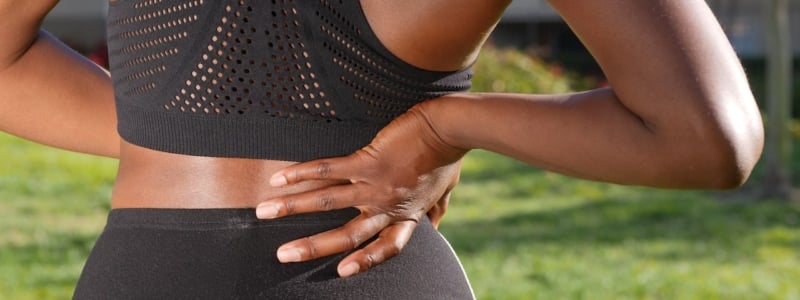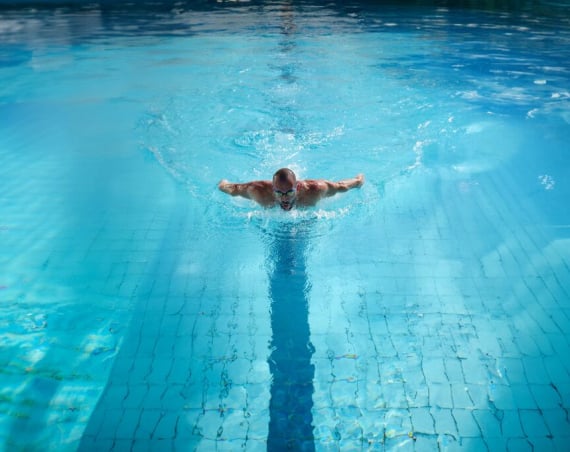You don’t have to be hunched over a laptop all day to feel the effects of poor posture. Rounded shoulders, a tight neck or an aching lower back can all be subtle signs that your alignment’s off. Over time, these symptoms can sap your energy and leave you feeling stiff and fatigued.
The good news? Posture isn’t fixed; it’s trained. With the right balance of strength, mobility and awareness, you can retrain your body to move and rest in better alignment. Start by adding a few targeted exercises and stretches into your routine — ones designed to build stability through your core, open up tight muscles, and help you stand taller without even thinking about it.
Here are some of the most effective moves to get you started: simple, practical, and proven to make a difference.
Focus on your core
Good posture starts with the core, specifically, the deep muscles in your abdomen, pelvis and back. When these muscles are weak or underused, it’s harder to keep your spine aligned when sitting, standing or lying down. A low-impact exercise routine can help you start strengthening important muscle groups like the core in a gentle way. Try these three simple exercises to target your core:
Planks
Planks are perfect for engaging and strengthening the core. You can also do them anywhere for as much or as little time as you choose. There are several variations that can make planking easier or more difficult depending on your fitness level.
For a basic plank, start on your stomach with your forearms flat, then push your body up using your core, keeping your elbows and shoulders aligned and your torso straight from head to heels. Hold for 30 seconds to one minute. To make it a little harder, try a straight arm plank and eventually progress to plank shoulder taps.
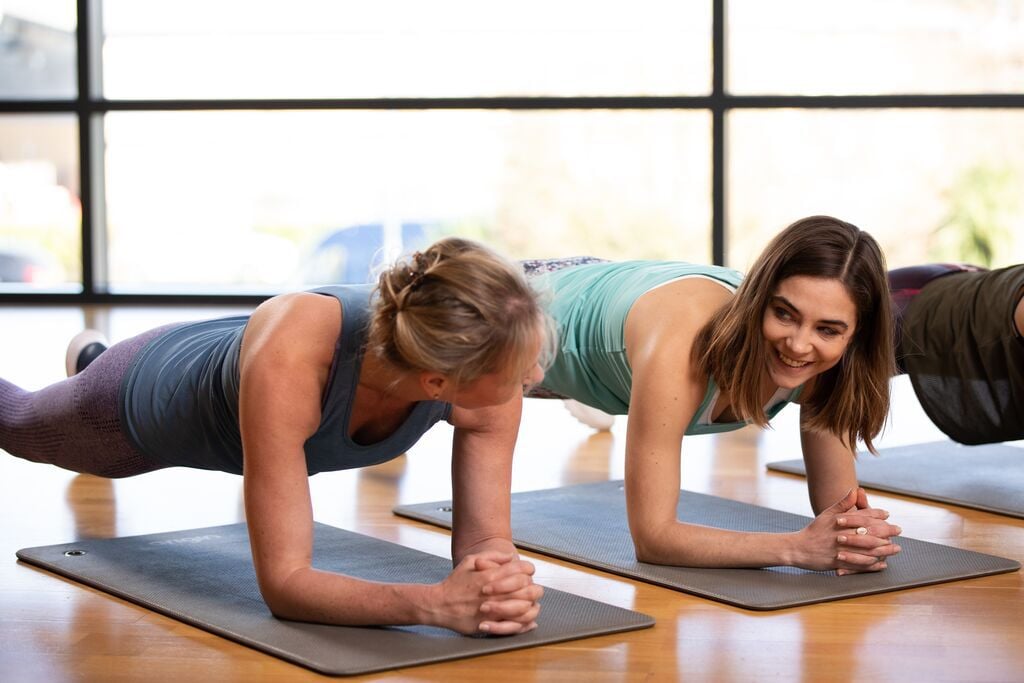
Bridge
Considered a core classic, a bridge engages the core, glutes, and hamstrings. The exercise can “wake up” your glutes and help your body to remember to use the hips to generate movement instead of the spine. This protects the lower back and makes it easier to maintain proper posture.
Start by lying on your back with your knees bent and feet flat on the floor. Engage your abdominal muscles and slowly lift your hips off the floor towards the sky. Align your hips, knees, and shoulders to form a straight line. Hold this position for three deep breaths and then gently lower to the floor.
Bird dog
Challenging your balance and coordination is a great way to target your core muscles. As well as your glutes, thighs and abs, bird dogs strengthen your lower back, which is a common problem area for anyone with bad posture.
Start kneeling with your hands pressed into the ground shoulder-width apart. This is known as table pose. Extend one arm straight ahead and extend the opposite foot back. Engage your abs to hold a straight line from your fingertips to your toes. Repeat on your other side to complete the rep.
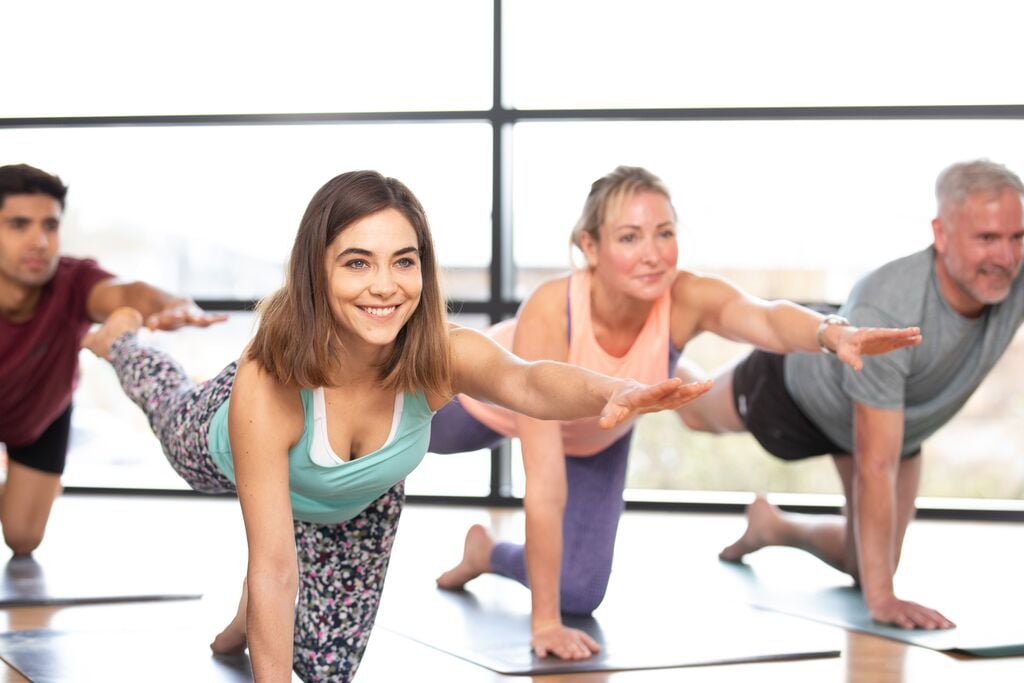
Don’t underestimate the power of flexibility
The greater your flexibility, the more range of motion you’ll have, which can only be a positive thing for your posture. Stretches help increase flexibility, relieve muscle tension, and allow you to sit and stand straighter and maintain proper posture throughout the day. Joining a weekly yoga class is a great way to work on your flexibility, but these stretches can help you make some progress at home.
Cat cow
Cat and cow poses will help you relax your body and focus on breathing. They can improve posture and balance and can help relieve back pain.
Start on your hands and knees in table pose with your knees hip-width apart and feet directly behind your knees. Your palms should be pressing into the floor directly under your shoulders with your fingers facing forward. For the cow pose, inhale and push your chest forward, allowing your belly to drop. Lift your head and gaze straight ahead with relaxed shoulders. For cat pose, exhale and round your spine upward, tucking your tailbone and pushing your pubic bone forward while releasing your head towards the floor. Flow back and forth between the two poses for one minute.
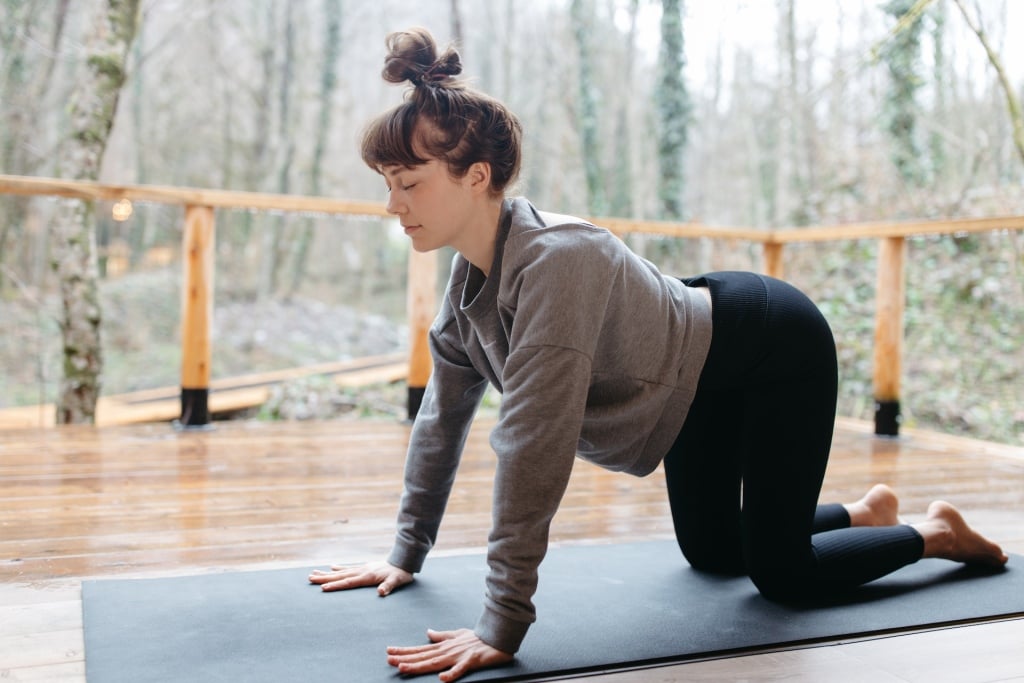
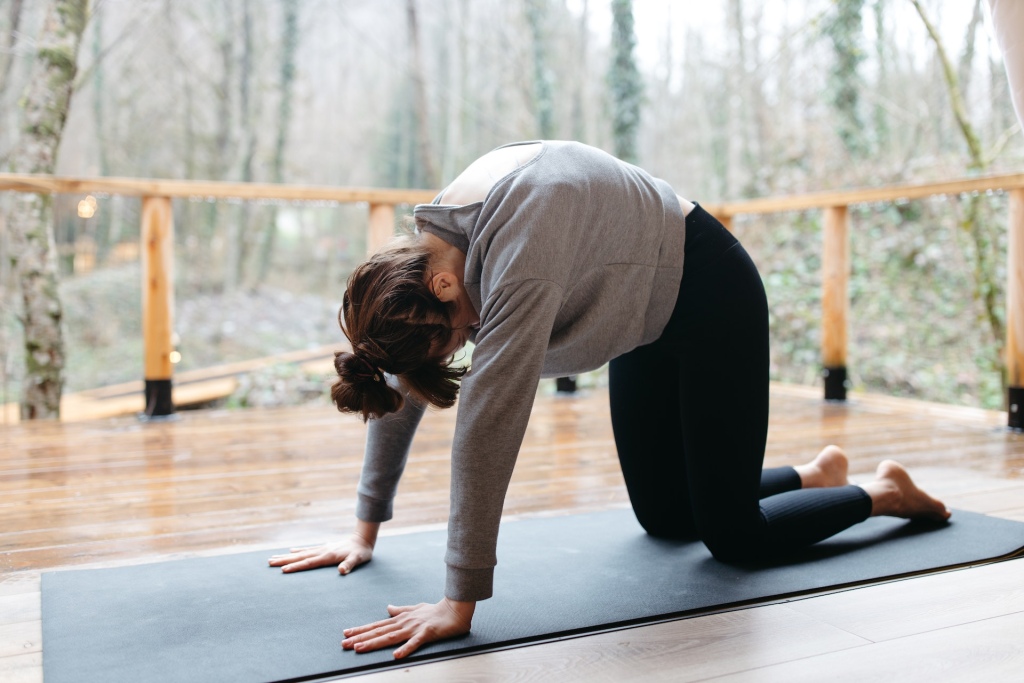
Hip flexor stretch
Spending a lot of time sitting — like many of us do — can lead to tight hip flexors. Since the hip flexors connect the spine to the pelvis, this can impact our overall posture. Stretching the hip flexors regularly is an important way to align the entire body and ensure no muscle is left compensating for another one.
To stretch your hip flexors, kneel on your right knee with your left leg bent at a 90-degree angle and your foot planted in front of you. Place your right hand on your right hip to avoid bending at the waist. Keep your back straight and your abdominal muscles tight. Lean forward, shifting your body weight onto your front leg until you feel a stretch in your right thigh. Hold for 30 seconds. Switch legs and repeat on the other side.
Child’s pose
Child’s pose is a gentle stretch for the hips, thighs, ankles and back. It helps calm the mind and relieve stress while reducing pain and encouraging better posture.
Start on your hands and knees in table position, exhale, and lower the hips to the heels and forehead to the floor. Start with your knees together and as you become more flexible, practise spreading the knees slightly apart.
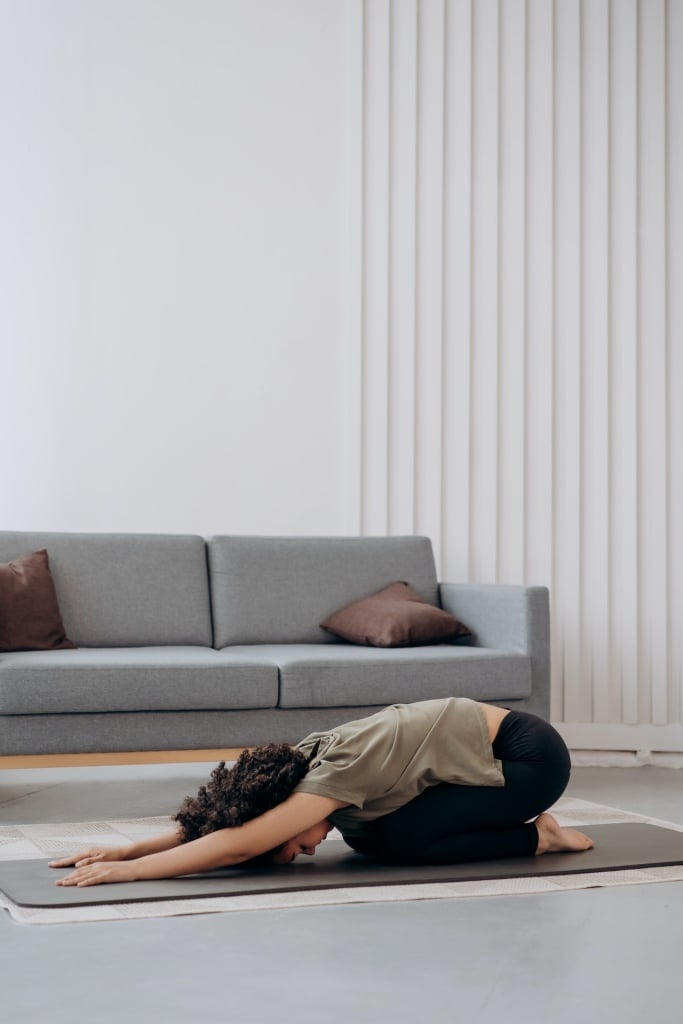
Reminders for good posture
In addition to exercise, there are a few habits that can help you improve your flexibility day-to-day, such as:
- Don’t sit for long periods of time. Get up and move around for a few minutes every hour to give muscles a stretch.
- If you must sit for longer, such as during work hours, improve ergonomics with a quality desk chair and the right desk height.
- Wear comfortable shoes with arch support when walking.
- Be aware of your posture and correct it periodically.
Once you’ve mastered some of the basic exercises you can do at home to improve your posture, consider joining a yoga or Pilates class to build on your progress.
Find a club